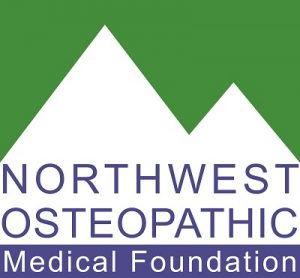By Dr. Charles Ross
EDITOR’S NOTE: The Tillamook County Pioneer is pleased to announce our newest column “In Good Health” by the Northwest Osteopathic Medical Foundation. We are proud that NWOMF selected the Pioneer as it’s first media partner to increase their outreach and education about osteopathic medicine and general wellness. Weekly columns will focus on particular topics each month. If you have suggestions for health/wellness articles, please contact editor@tillamookcountypioneer.net.
Does food make a difference in our children’s physical or mental health? I suspect that we all have an opinion. But what does science show? This blog will be a review of a recent book written by Joel Fuhrman MD titled Fast Food Genocide. I encourage everyone to read this book before you make up your mind about the effect of food on our children’s health. Also, I will add some studies from Michael Greger MD research site at www.nutritionfacts.org
The fast food industry spends more than $5 million a day advertising sugary cereal, junk food, and fast food to children; and it is working. These advertisements induce children to eat more sugar, fried foods, and sweetened beverages. These highly palatable processed foods deaden taste for fruits and vegetables. No wonder it is so hard to get our children to eat fruits and veggies. Advertising sweetened, processed foods to children must stop.
It is well known that the incidence of obesity and diabetes are common in people who live in food deserts; these are communities without local grocery stores, but instead have convenience stores and fast food places with mainly junk and processed foods. Researchers have found that the farther an expectant mother has to travel to buy produce, the more likely she is to give birth to a full-term baby with low birth weight.
Low-nutrient diets create a wide range of physical and mental problems that start early in life. Low birth weights have been directly correlated with future learning problems, heart disease, high blood pressure, and type 2 diabetes later in life. “One study found that 9-year olds who experienced intrauterine growth restriction had more cognitive impairments, including difficulties with language, creativity, and executive functioning. They also had lower academic achievement and a diminished ability to ‘self-regulate’, meaning difficulty in regulating negative emotion, which leads to irritability and aggressiveness.”
Understand that there is a connection between food and brain development and behavior. The body and brain require a diverse array of nutrients that are found in natural unprocessed or minimally processed plant foods. Emotional well-being, willpower, determination, work ethic, patience, concentration, creativity, memory, and intelligence all depend on exposure to sufficient nutrients and healthy food throughout life. However, most Americans get more than half of their calories from fast food and processed food.
“Chronic anger, chronic mild depression, and mental inflexibility are symptoms of subclinical nutritional deficiencies that are extremely common and difficult to diagnose.”
“Clinical depression is the top cause of disability for children 5 and older.”
“A dietary pattern that includes fried food, sweetened desserts, processed meats, and refined grains has been shown to be strongly associated with depression, and the consumption of whole natural foods has been shown to be strongly protective.”
“One study has found an increase in behavior and attention problems in 5-year olds with increased consumption of soda.”
“Children who consume a superior diet perform better academically compared with those who are nutrient deficient. Well-fed children are also less hyperactive, less moody, and better behaved.”
“Twelve thousand students between 5th and 8th grades showed those who ate processed and fast foods had the worst skills in math, reading, and science. Researchers concluded that high levels of fast food consumption are predictive of slower growth in academic skills.”
“A 2012 study showed that fast foods and high-fat foods, such as hamburgers, onion rings, oily pizzas, and other regularly consumed fast foods, scar the brain and damage the hypothalamus in both rodents and humans. Unfortunately, the fast food inflamed brain results in detrimental effects continuing into adulthood.”
What about some science from Michael Greger MD? Several studies show improvement in cognitive performance in children with supplementing water at school. Dehydration correlates with poorer cognitive abilities. (See Does a Drink of Water Make Children Smarter?)
https://nutritionfacts.org/video/does-a-drink-of-water-make-children-smarter/Sodium benzoate has been linked to hyperactivity. A study of 5000 10th graders found soft drink consumption significantly tied to hyperactivity in both male and female teens. (see Diet and Hyperactivity)
https://nutritionfacts.org/topics/adhd/
Researchers in Japan found that with the Westernization of the Japanese diet that higher maternal intake of meat during pregnancy was significantly associated with an increased risk of both suspected and physician-diagnosed eczema. (See Preventing Childhood Allergies)
https://nutritionfacts.org/video/preventing-childhood-allergies/
The early onset of puberty in girls is associated with animal protein consumption and may be due to endocrine-disrupting chemical pollutants in the meat supply. (See Protein, Puberty, and Pollutants)
https://nutritionfacts.org/video/protein-puberty-and-pollutants/
Consider the consequences of feeding fish to children. Studies of the neurobehavioral toxicity of mercury on children suggest that no level of mercury exposure can be considered safe. (See Nerves of Mercury)
https://nutritionfacts.org/video/nerves-of-mercury/
A study of children exposed at birth to PCBs from their mothers would take from 20 to 45 years to eliminate the PCB’s; at that is assuming that there was no further exposure which is generally not the case (See How Fast Can Children Detoxify From PCBs)
https://nutritionfacts.org/video/how-fast-can-children-detoxify-from-pcbs/
Maybe it is time for all of us to spend more time helping our children eat healthier foods while avoiding unhealthy, polluting chemicals.
So what can be done?
“Appleton Central Alternative Charter High School staff reported that student’s disruptive behavior and health complaints diminished substantially after a wellness program was established; healthy food for breakfast and lunch was provided for 5 years. The principal recorded that negative behaviors, including vandalism, drug use, dropping out, expulsions, and suicide attempts, ceased.”
This study demonstrates the powerful role that food plays in all our lives.
I ask again….what can be done?
1. Begin to eat healthy ourselves; setting an example for our children….that would include eating whole foods that are mainly plant based while eliminating highly processed, junk foods, and fast foods that are nutrient depleted.
2. Lobby against advertising for sweet, junk, and processed foods for our children
3. Eliminate all processed meats from school menus; processed meats are class 1 carcinogens like smoking and asbestos
4. Stop subsidizing dairy products in our schools
5. Support Voices For Healthy Kids; this is a joint initiative of the American Heart Association and The Robert Wood Johnson Foundation working to help all children grow up at a healthy weight.
 For more information about NWOMF see their website at www.nwosteo.org, or David Tate, Executive Director at tate@nwosteo.org or Linda Tate, Communications Director at linda@nwosteo.org, or call 503.263.7878.
For more information about NWOMF see their website at www.nwosteo.org, or David Tate, Executive Director at tate@nwosteo.org or Linda Tate, Communications Director at linda@nwosteo.org, or call 503.263.7878.
The Northwest Osteopathic Medical Foundation is a public charity committed to Advancing Wellness through the Osteopathic Approach. As a charity, we do not represent any medical school, medical association, medical practice, or individual physician.
This blog should not be considered to be medical advice. Your personal health is best discussed one-on-one with your personal physician. Rather, this blog is intended to highlight the distinctive philosophy and practice of osteopathic medicine as expressed by the author and does not necessarily represent the opinion of the Northwest Osteopathic Medical Foundation, or other Osteopathic physicians. The information and opinions are solely those of the author.


